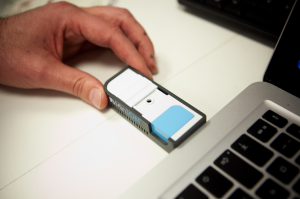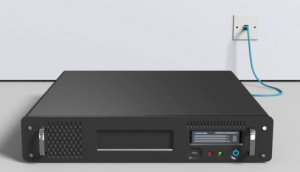This is a guest post from Mari Niemi at the Wellcome Trust Sanger Institute. Mari is a graduate researcher whose research combines the results of human genetic studies with zebrafish models to study human disease.
The turn of the year 2012/13 saw the emergence of a new and exciting – and some may even say revolutionary – technique for targeted genome engineering, namely the clustered regularly interspaced short palindromic repeat (CRISPR)-system. Harboured with the cells of many bacteria and archaea, in the wild CRISPRs act as an adaptive immune defence system chopping up foreign DNA. However, they are now being harnessed for genetic engineering in several species, most notably in human cell lines and the model animals mouse (Mus musculus) and zebrafish (Danio rerio). This rapid genome editing is letting us to study the function of genes and mutations and may even help improve the treatment of genetic diseases. But what makes this technology better than what came before, what are its downsides, and how revolutionary will it really be?
Genetic engineering – then and now
Taking a step backward, the ability to edit specific parts of an organism’s genetic material is certainly not novel practice. In the last decade or two, zinc finger nucleases (ZFNs) and more recently employed transcription activator-like endonucleases (TALENs) saw the deletion and introduction of genetic material, from larger segments of DNA to single base-pair point mutations, at desired sites become reality. ZFNs and TALENs are now fairly established methods, yet constructing these components and applying them in the laboratory can be extremely tedious and time-consuming due to the complex ways in which they binding with DNA. Clearly, there is much room for improvement and a desire for faster, cheaper and more efficient techniques in the prospect of applying genome engineering in treatment of human disease.

 Here at Genomes Unzipped we love genomes. But there is more to the world of biology than genomics, there is more to understanding your own body than personal genetic tests. To understand the human body, you have to look not just at the DNA present, but also at what genes are turned on in what tissues, what cells are being produced in what numbers, what compounds are circulating in your blood, and even what other organisms are also living on your body. However, for the interested consumer the non-genetic aspects of personalized medicine have generally been less readily accessible than the genetic aspect. This post discusses a few companies that are trying to fill this gap, and who are looking to the general public to crowd-source funding for their products.
Here at Genomes Unzipped we love genomes. But there is more to the world of biology than genomics, there is more to understanding your own body than personal genetic tests. To understand the human body, you have to look not just at the DNA present, but also at what genes are turned on in what tissues, what cells are being produced in what numbers, what compounds are circulating in your blood, and even what other organisms are also living on your body. However, for the interested consumer the non-genetic aspects of personalized medicine have generally been less readily accessible than the genetic aspect. This post discusses a few companies that are trying to fill this gap, and who are looking to the general public to crowd-source funding for their products.

 More on nanopore sequencing this week. I mentioned in my Genetic Future post that the UK sequencing company Oxford Nanopore is somewhat of a dark horse, and an agreement with Illumina has required complete silence about their potential DNA sequencing machines. However, this wasn’t strictly true; Illumina has signed an agreement for the exonuclease sequencing technology, and on that we aren’t likely to hear anything until it is ready.
More on nanopore sequencing this week. I mentioned in my Genetic Future post that the UK sequencing company Oxford Nanopore is somewhat of a dark horse, and an agreement with Illumina has required complete silence about their potential DNA sequencing machines. However, this wasn’t strictly true; Illumina has signed an agreement for the exonuclease sequencing technology, and on that we aren’t likely to hear anything until it is ready.
 RSS
RSS Twitter
Twitter
Recent Comments